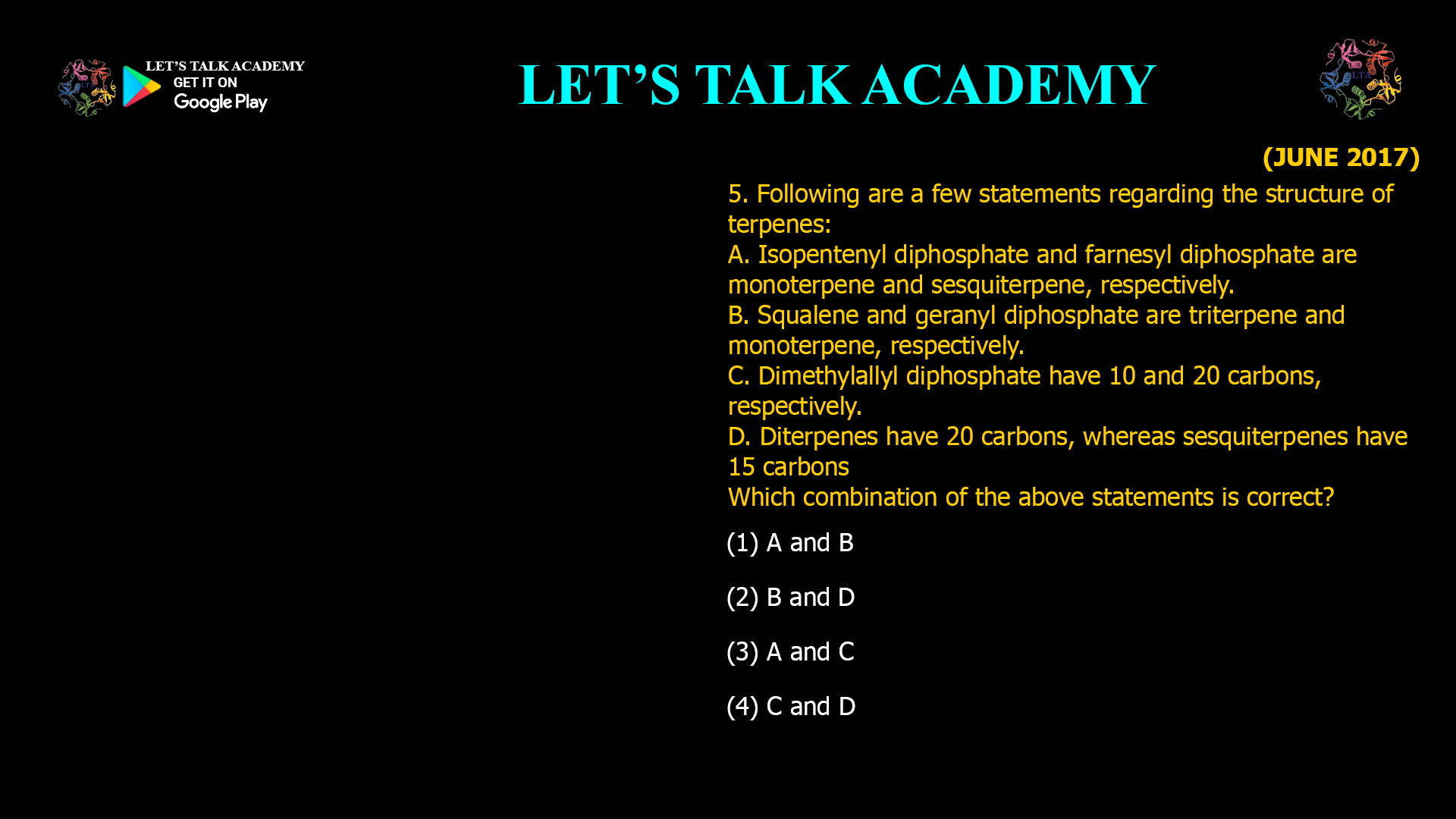- Following are a few statements regarding the structure of terpenes:
A. Isopentenyl diphosphate and farnesyl diphosphate are monoterpene and sesquiterpene, respectively.
B. Squalene and geranyl diphosphate are triterpene and monoterpene, respectively.
C. Dimethylallyl diphosphate have 10 and 20 carbons, respectively.
D. Diterpenes have 20
carbons, whereas sesquiterpenes have 15 carbons
Which combination of the above statements is correct?
(1) A and B
(2) B and D
(3) A and C
(4) C and DCorrect answer: (2) B and D
Explanation:
-
(A) is incorrect:
-
Isopentenyl diphosphate (IPP) is a 5-carbon isoprenoid unit, not a monoterpene.
-
Farnesyl diphosphate (FPP) is a 15-carbon intermediate and precursor of sesquiterpenes, correctly identified as sesquiterpene precursor but IPP is not a monoterpene.
-
-
(B) is correct:
-
Squalene is a 30-carbon triterpene precursor formed by dimerization of two FPP molecules.
-
Geranyl diphosphate (GPP) is a 10-carbon precursor for monoterpenes.
-
-
(C) is incorrect:
-
Dimethylallyl diphosphate (DMAPP) is a 5-carbon isoprenoid unit, not 10 or 20 carbons.
-
-
(D) is correct:
-
Diterpenes have 20 carbon atoms (from four isoprene units).
-
Sesquiterpenes have 15 carbon atoms (from three isoprene units).
-
Option-wise:
-
(1) A and B — A false.
-
(2) B and D — correct.
-
(3) A and C — both false.
-
(4) C and D — C false.
-
Terpenes are classified based on the number of isoprene units: monoterpenes (C10) derive from geranyl diphosphate, sesquiterpenes (C15) from farnesyl diphosphate, diterpenes (C20) have 20 carbons, and triterpenes like squalene have 30 carbons, clarifying the biosynthetic and structural distinctions among terpene classes.



